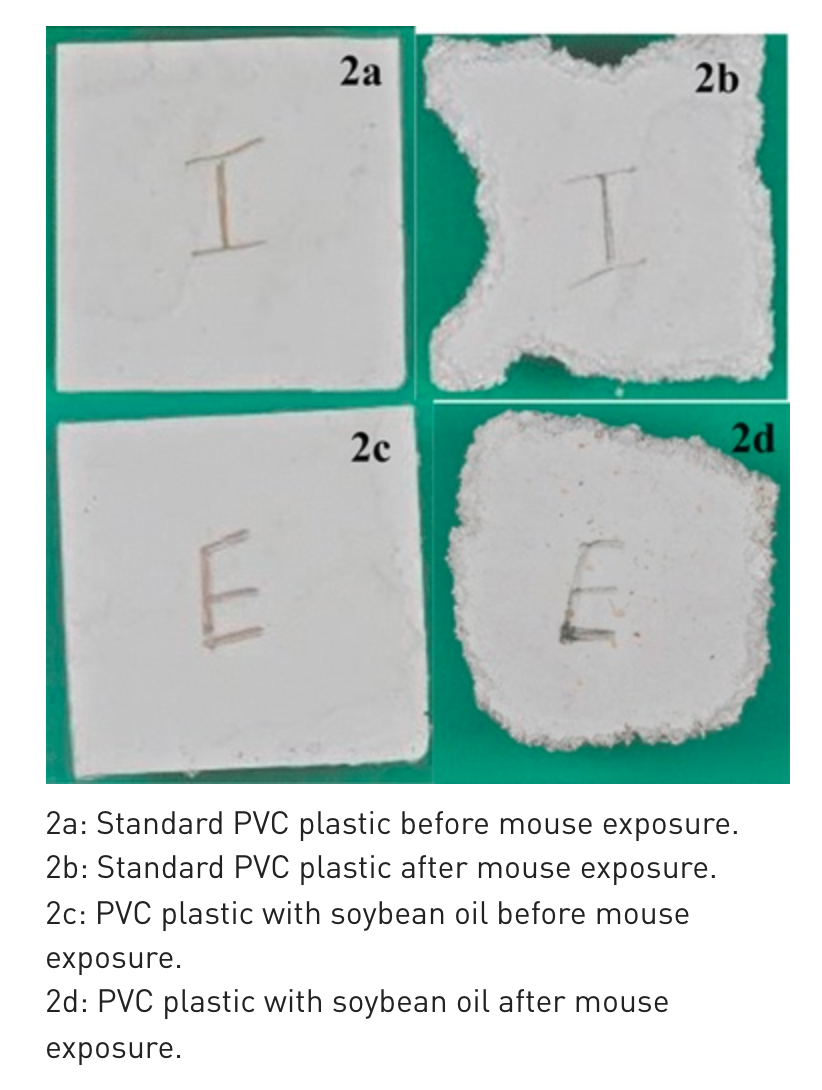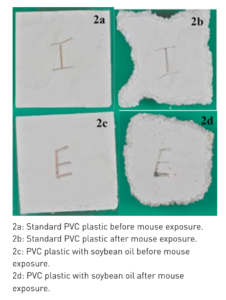This news from the United Soybean Board (USB) caught my attention because I never thought that rodents and insects could be more attracted to plant-based plastics and materials. Fortunately, this is not the case (for rodents anyway) as according to a recent study funded by the USB, soy-based materials are not that tasty compared to their petroleum-based counterparts.
Researchers conducted the study to determine if including soybean oil or its derivatives in any one of several types of rubbers and plastics — natural rubber, styrene-butadiene rubber, ethylene-propylene-diene monomer, or flexible polyvinyl chloride (PVC) plaque samples — affects the extent of gnawing damage by mice. The components they tested included epoxidized soybean oil, degummed soybean oil, high oleic soybean oil, and styrenated soybean oil.
Twelve types of rubbers and plastics were exposed to 10 mice for 14 days. At eight and 15 days, researchers assessed the plaques for gnawing damage both subjectively and by weight loss. They noted extensive gnawing only on plaques made of PVC: standard PVC and PVC with 10 parts per 100 epoxidized soybean oil. The gnawing damage difference between the two was not statistically significant.
Reports from the other 10 treatments all showed negligible gnawing, and the inclusion of soybean oil or its derivatives in the common elastomers tested did not affect the extent of rodent gnawing. According to USB, soy plastic is now being used in a variety of products, from tractor seats to flooring to vehicle wiring. Soybean oil reportedly supplies a cost-effective secondary heat stabilizer and co-plasticizer in flexible PVC applications and provides a sustainable alternative to petroleum without sacrificing performance.
The USB’s soy checkoff is supported entirely by US soybean farmers with individual contributions of 0.5% of the market price per bushel sold each season. The efforts of the checkoff are directed by the United Soybean Board, composed of 78 volunteer farmer-leaders often nominated by their state-level checkoff organizations, called Qualified State Soybean Boards. In 1991, the U.S. Congress passed a provision as part of the 1990 farm bill to form the soy checkoff at the request of soybean farmers. The soy checkoff focuses our investments in three key areas: education, promotion and research. The soy checkoff is also dedicated to research to increase profitability at the farm level.





